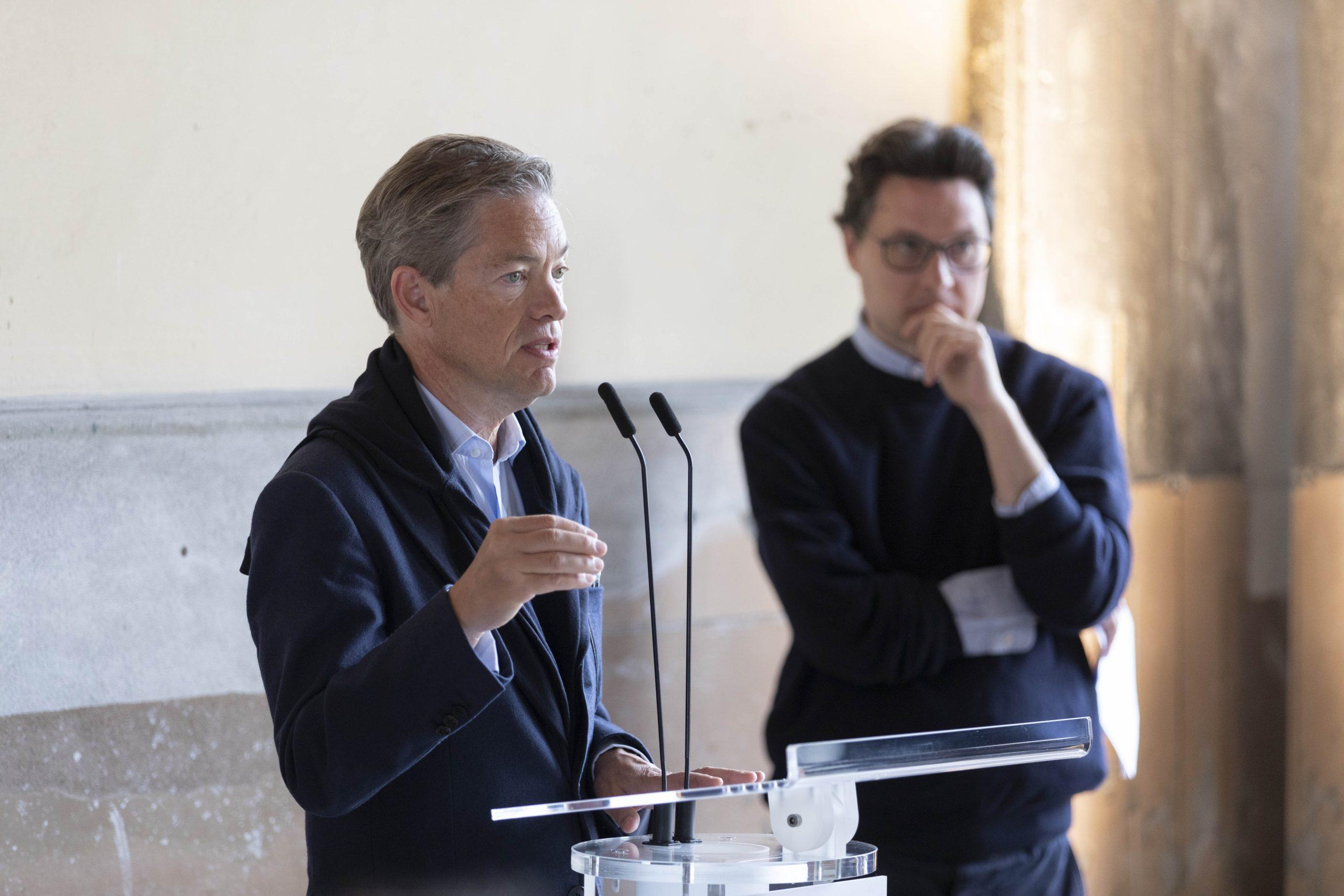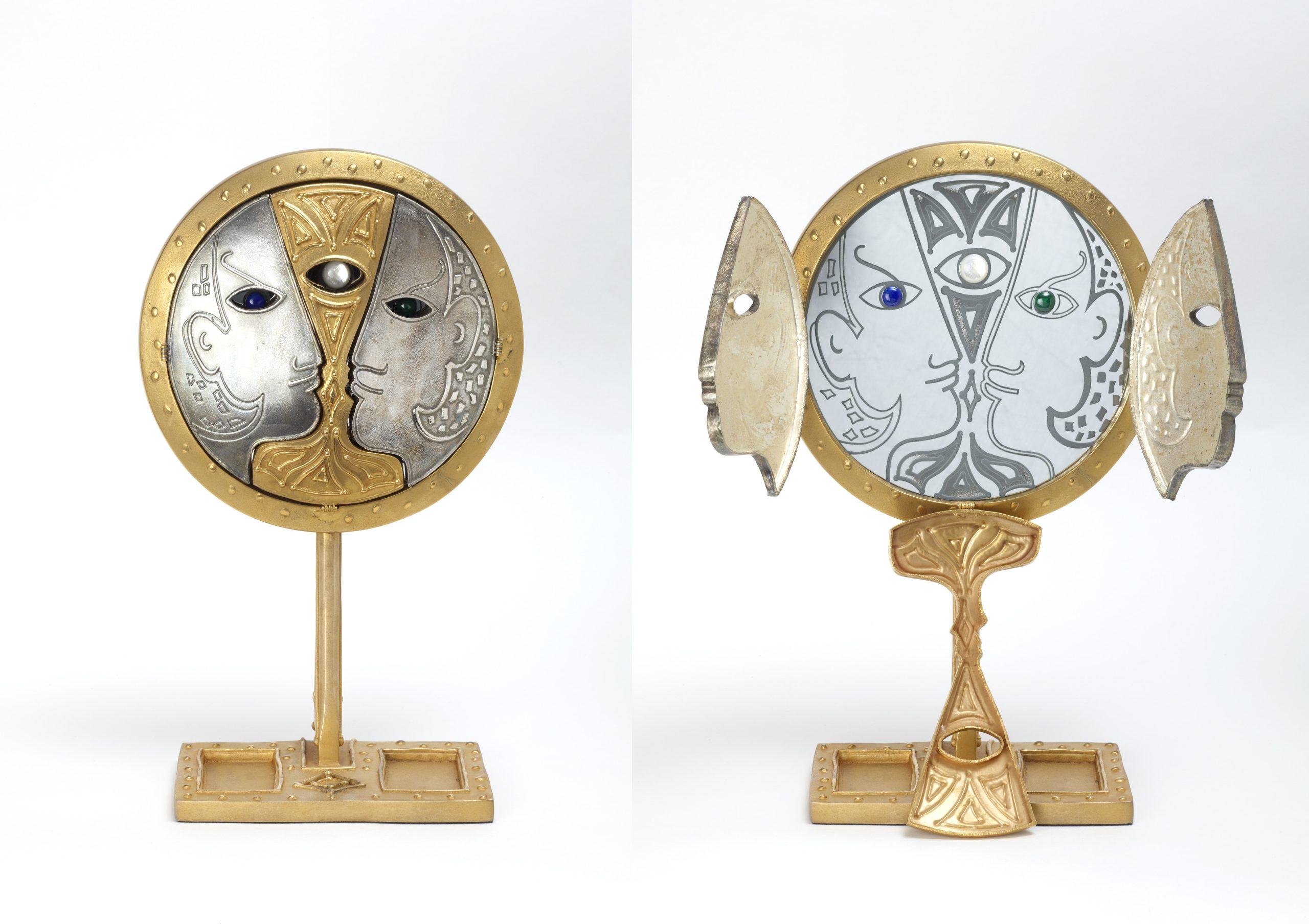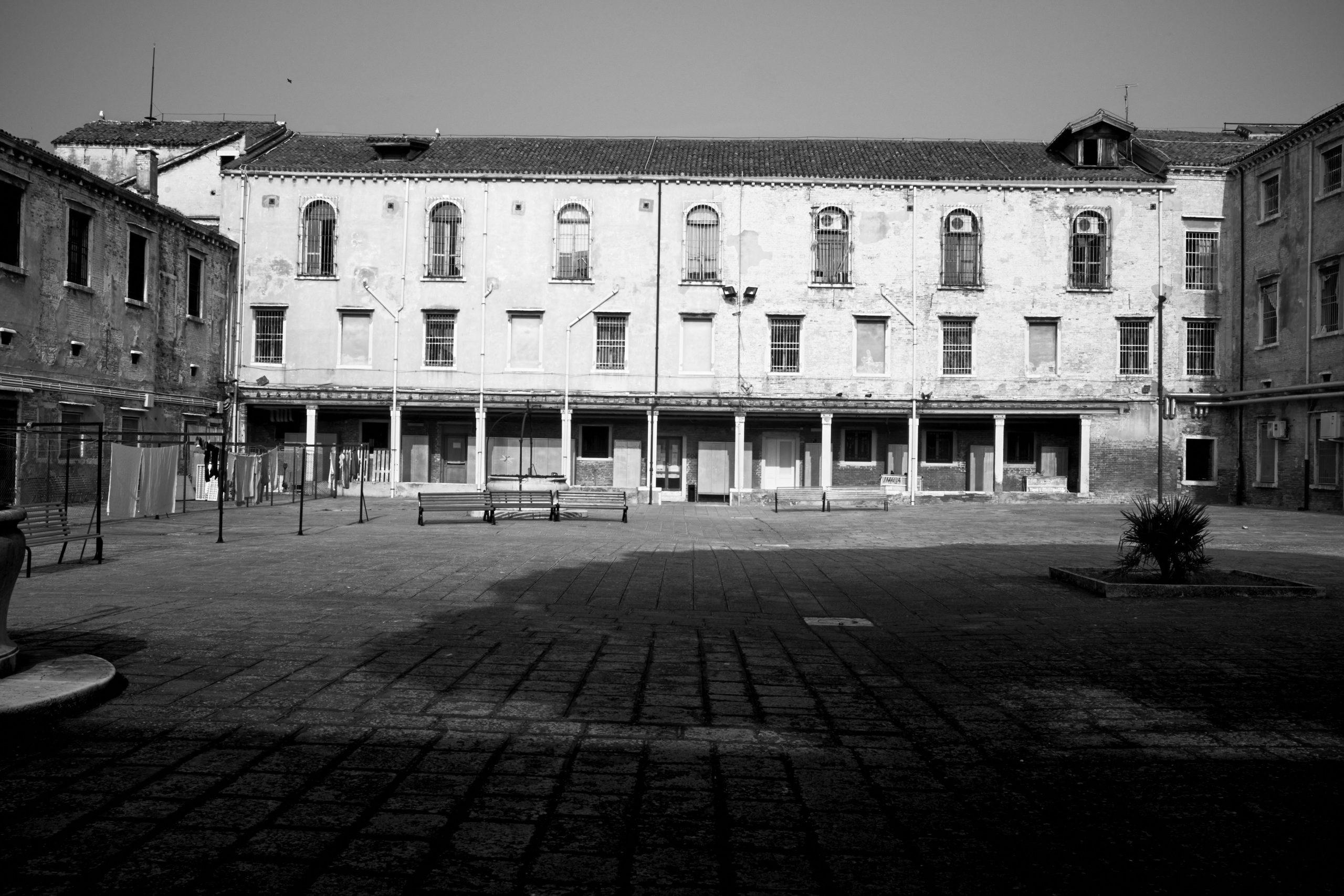Established by Berggruen Arts & Culture, Palazzo Diedo opens its doors to the public after a lengthy restoration. An exhibition and two special projects inaugurate the building, which will host an artist’s residency programme, symposia and much more. The curator, Adriana Rispoli, tells us about the new institution
Urs Fischer, Piero Golia, Carsten Höller, Ibrahim Mahama, Mariko Mori, Sterling Ruby, Jim Shaw, Hiroshi Sugimoto, Aya Takano, Lee Ufan and Liu Wei are the protagonists of the inaugural exhibition of Palazzo Diedo, the new hub for contemporary art established in Venice by Berggruen Arts & Culture, an international charitable foundation created by the collector and philanthropist Nicolas Berggruen. Starting on 20 April 2024, Palazzo Diedo will initiate an active dialogue with the cultural fabric of the city, inviting artists to do the same. Adriana Rispoli, curator of Berggruen Arts & Culture, joins us to talk about the exhibition she curated together with Mario Codognato, director of Berggruen Arts & Culture, and the future programming of the new Venetian institution.
Palazzo Diedo opens its doors to the public after a significant restoration. How will it dialogue with the Venetian artistic-cultural landscape?
With a view to setting itself apart from the rest of the immense Venetian cultural offering, Palazzo Diedo aims, through artist’s residencies, to become a living place. The last of the five floors of the building is in fact dedicated to the apartments that will welcome the artists. Palazzo Diedo, reserving both the top and second floors for artistic production, aims to be an active organ, also when it comes to the social fabric of the city. By inviting artists to produce in Venice, we want to give new life to the great tradition of Venetian crafts. With the inaugural exhibition entitled Janus, which brings together artists from all over the world, Palazzo Diedo clarifies its intent: juxtaposing different cultures and making them dialogue with the local culture of Venice, which has always been a crossroads of trade and exchange.
The exhibition focuses on original site-specific interventions by famous contemporary artists. Can you tell us a little more?
More than a classic exhibition, Janus is the opening event of Palazzo Diedo. It can be called an exhibition because alongside the permanent works it will feature works that will only be exhibited for the duration of the Biennale Arte. In both cases, regardless, the works are tied to new productions by the artists or, as I was saying, to the Venetian artisan tradition. Janus, the divinity capable of looking forward and backward at the same time, seemed to us to be the right metaphor to convey Palazzo Diedo’s intention to face the future consciously and be respectful of the past.
New York’s The Kitchen and the Polaroid Foundation present two special projects in conjunction with the exhibition. What do they consist of?
The Kitchen is historically a space dedicated to the transversality of art and this element links it the intentions of Palazzo Diedo. Together with The Kitchen we chose the young artist Rhea Dillon – a sort of cameo within the exhibition –, whose work focuses on vital contemporary issues, from gender to identity to the decolonization of culture. What interests us is the curatorial approach of The Kitchen, which has always been tied to a non-binary position, and deserves the attention it is now getting, in the arts as well.
And what about the Polaroid Foundation?
Polaroid, which as a company is experiencing a phase of re-presentation on the market, will interact with the Janus artists by creating new works, within a performative framework. The international Polaroid team has reactivated the old Polaroid machine that printed in a 20×24 inch format and, before the inauguration of the exhibition, will create snapshots in collaboration with the artists, according to their wishes and choices. The pictures will then be presented to the public who visit the exhibition.
Are you establishing or will you establish other collaborations, outside Palazzo Diedo too?
On the second floor there will be a black box dedicated to the moving image. We will kick things off with an exclusive preview screening of the latest film by Koo Jeong-a, an artist who this year represents the South Korean pavilion at the Biennale Arte. His work, OUSSS, is in 3D, somewhere between animation and science fiction, and will be screened every Thursday for the entire duration of the Biennale. It is the first event in a schedule that we have been putting together in the last few weeks.
Mariko Mori, on the other hand, already present with a permanent piece, will offer a preview at Palazzo Diedo of a few works related to the Peace Crystal project, which will open to the public in June in the Gardens of Palazzo Corner della Ca’ Granda. This will be the third installation by the Faou Foundation, which she founded in 2010 to promote environmental awareness and to find a balance between man and nature. This preview will open the doors to a public talk, which will take place in June and is part of the activities (symposia, performances) designed to make Palazzo Diedo a living place and at the same time a hotbed of critical thought. Furthermore, during Venice’s Art Night, on 22 June, Palazzo Diedo will host the Hans Ulrich Obrist marathon.
Getting back to the long-term artist’s residency programme, how will the project be structured?
We have not yet developed an open call, but potential residencies are already planned for artists who we would like to be involved in the first phase of the project. The aim is to ensure that artists, based on their own wishes and languages, continue to experiment with the traditional techniques of the city. In fact, a good portion of the permanent interventions carried out for Palazzo Diedo are the result of a dialogue with local manufacturers. Sterling Ruby, for example, produced a series of lanterns that are a nod to glasswork and ironwork, reinterpreted by the artist. While the lanterns appear very traditional, upon closer inspection they reveal a defect, something unseen, an error, thus combining the artist’s modus operandi (which places waste, the marginal, at the centre of his work) and the local artisan history. This intervention is flanked by two new site-specific monumental works made with remnants of lace, buoys, fishing nets: a sort of decadent crinoline, a shroud of everyday life freighted with melancholy. One of Urs Fischer’s pieces, on the other hand, was produced in Murano and, thanks to the mirrored surfaces it is made of, interacts incredibly with the warm Venetian light, creating a psychedelic effect and offering a contemporary reinterpretation of the local glassmaking tradition.
Interview by Arianna Testino
BIO
Adriana Rispoli is an art historian and curator specialized in transversal languages of contemporary art, from performance to video art to participatory art. Pdh Candidate in Art and Sustainability at Università di Salerno, Italy.
In twenty years of activity she has collaborated with numerous private, public, Italian and international institutions in the realisation of solo and group exhibitions, artistic residencies, site-specific commissions and editorial projects, including the Venice Biennale, the Madre Museum and the Fondazione Morra in Naples, the Austrian Forum, the Goethe Institut, the Ministry of Foreign Affairs, the Palazzo Ducale in Massa Carrara, the Villa Pignatelli Museum and Real Museo e Bosco di Capodimonte in Naples, the Archaeological Park in Paestum, the Ovartaci Museum in Aarhus, the Museum of Contemporary Art in Zagreb, the CCA in Tel Aviv, the State Museum in Thessaloniki, the Zoma Museum in Addis Abeba.
She works as a curator for Palazzo Diedo ‒ Berggruen Arts & Culture.
INFO
Janus
from 20 April to 24 November 2024
PALAZZO DIEDO
Cannaregio 2386, Venice
https://berggruenarts.org/
Cover photo: installation view of the work by Urs Fischer at Palazzo Diedo, Venice 2024. Photo credit: Massimo Pistore
Related Articles






